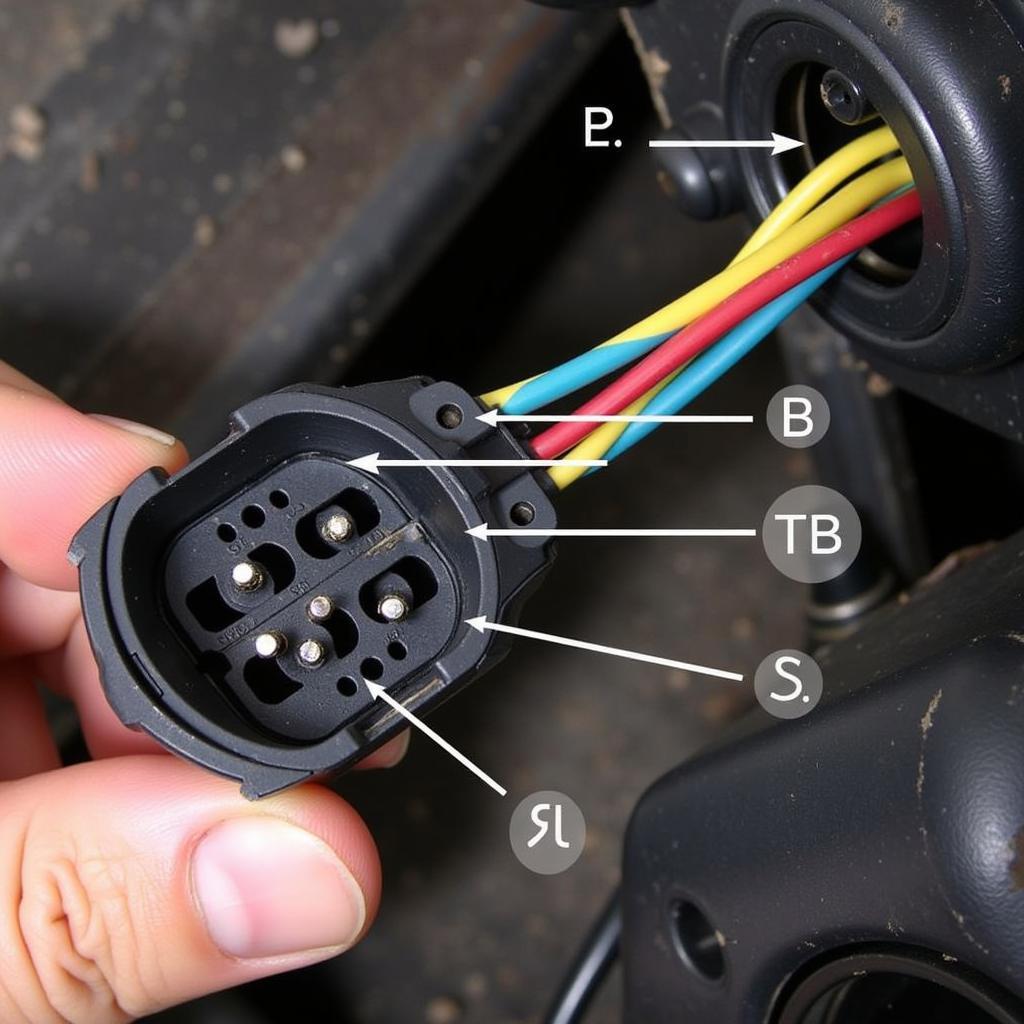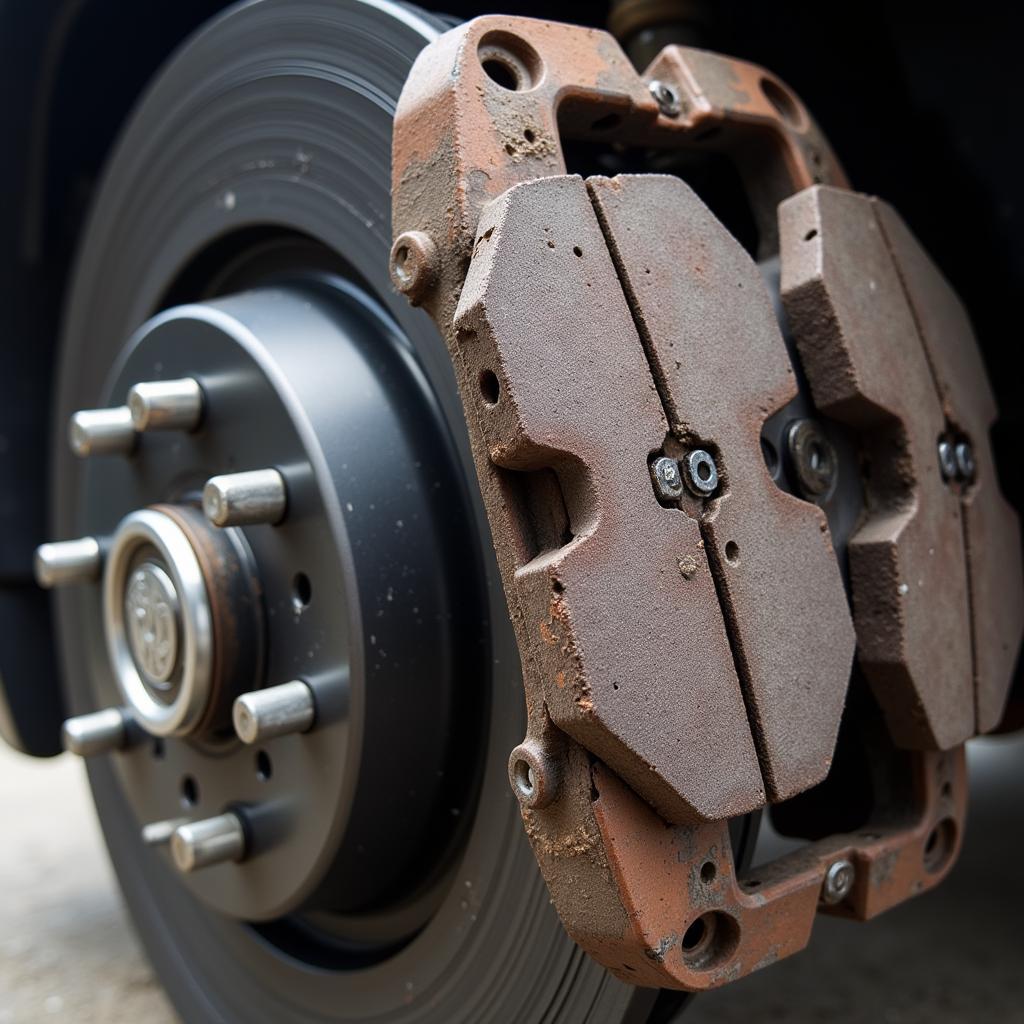A brake pad wear warning light flashing on your dashboard is never a welcome sight. It usually means one thing: it’s time for a brake job. This article will explore what the warning means, why it’s crucial not to ignore it, and what steps you can take to remedy the situation.
Understanding Your Car’s Braking System
Before delving into the warning light itself, it’s helpful to understand the basics of how your car’s braking system works. In essence, when you press the brake pedal, you’re activating hydraulic pressure that pushes brake pads against brake rotors. This friction slows the wheels, bringing your car to a stop.
Over time, brake pads, which are typically made of a composite material containing metals, fibers, and fillers, wear down due to this constant friction.
What Triggers a Brake Pad Wear Warning?
Most modern vehicles have a built-in wear sensor in the brake pad system. This sensor is a small piece of metal designed to make contact with the brake rotor when the brake pad material wears down to a certain level. This contact completes an electrical circuit, triggering the brake pad wear warning light on your dashboard.
Ignoring the Warning: A Risky Move
Ignoring a brake pad wear warning is like playing a dangerous game with your safety. Here’s why:
- Compromised Braking Performance: Worn brake pads mean reduced friction, which translates to longer stopping distances. This can be extremely dangerous, especially in emergency situations.
- Rotor Damage: Driving with worn brake pads can lead to damage to the brake rotors. The metal wear sensor can scrape against the rotor, causing grooves and unevenness. Damaged rotors can be costly to repair or replace.
- Costly Repairs: Addressing a simple brake pad replacement is far more affordable than dealing with the consequences of ignoring the warning. Rotor damage, caliper issues, and other problems can arise from neglecting your brakes.
What to Do When the Warning Light Turns On
Seeing the brake pad wear warning illuminated doesn’t necessarily mean panic, but it does require prompt action:
- Assess the Urgency: If the warning light is accompanied by any unusual noises like grinding or squeaking when braking, it’s essential to stop driving immediately and have your vehicle towed to a trusted mechanic.
- Schedule an Inspection: For a simple brake pad wear warning without additional symptoms, schedule an appointment with a qualified mechanic as soon as possible.
- Avoid Heavy Braking: Until the brake pads are inspected and replaced, try to anticipate stops and avoid heavy braking.
Brake Pad Replacement and Beyond
During a brake pad replacement, a mechanic will:
- Remove the old brake pads
- Inspect the brake rotors for damage and resurface or replace them if necessary
- Install new brake pads
- Test the braking system
It’s important to note that brake pad wear can vary greatly depending on driving habits, vehicle type, and environmental factors. Aggressive driving, frequent city driving, and hilly terrain can all accelerate brake pad wear.
Expert Insight
“Many car owners underestimate the importance of regular brake maintenance,” says John Smith, a certified master mechanic with over 20 years of experience. “Don’t wait for the warning light to come on. Having your brakes inspected annually as part of routine maintenance can help prevent unexpected issues and ensure optimal braking performance.”
Conclusion
The brake pad wear warning light is a crucial safety feature in your vehicle. Ignoring it can lead to safety hazards and costly repairs. By understanding the warning and taking prompt action, you can ensure the longevity of your braking system and, most importantly, your safety on the road.


